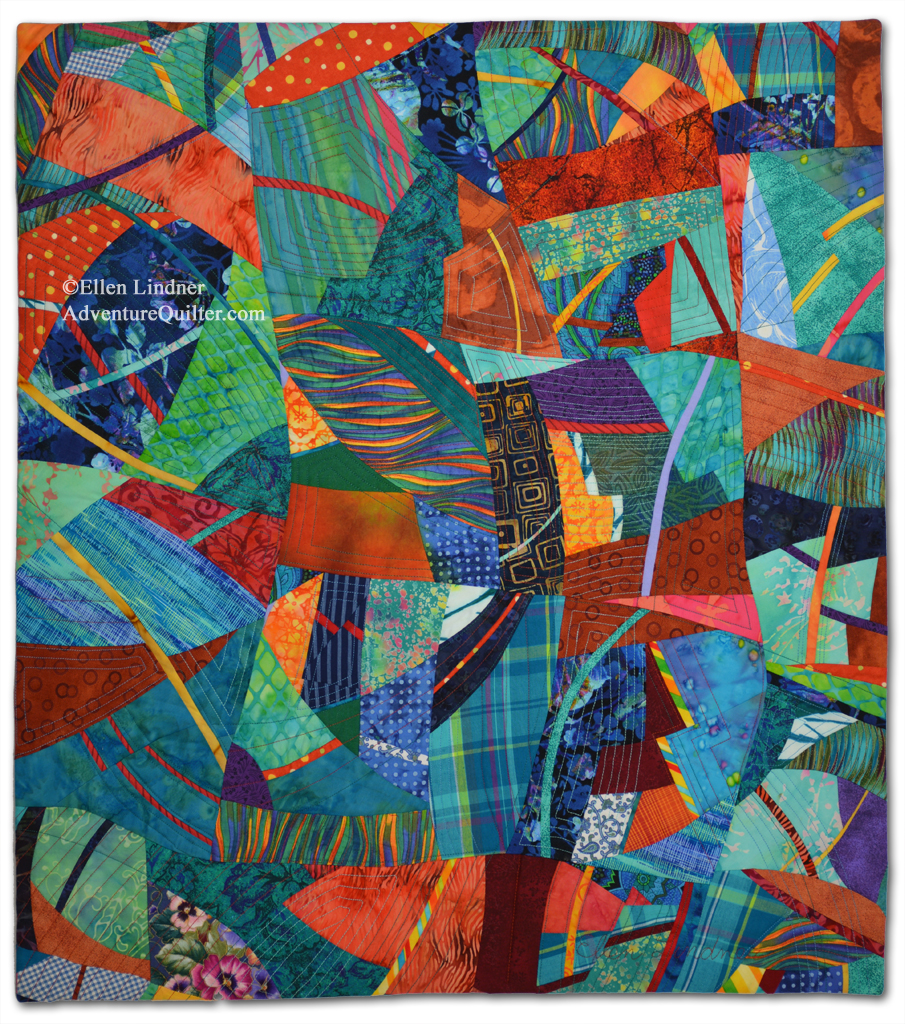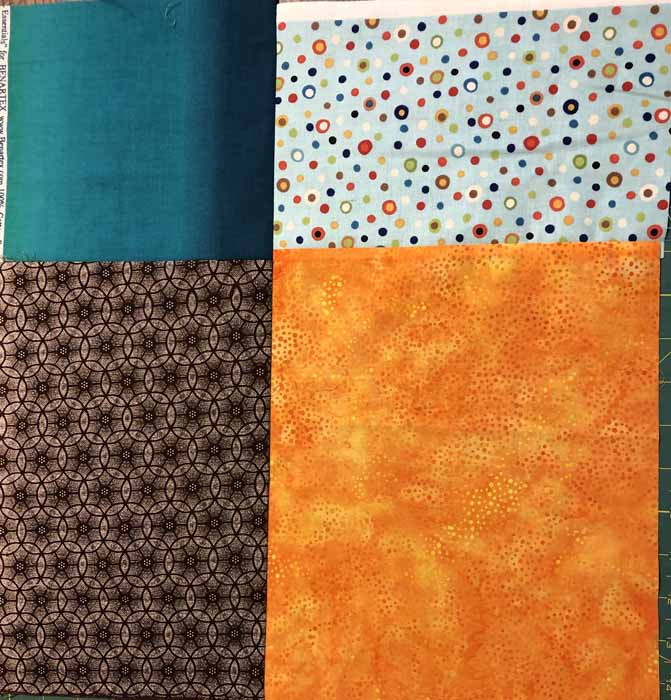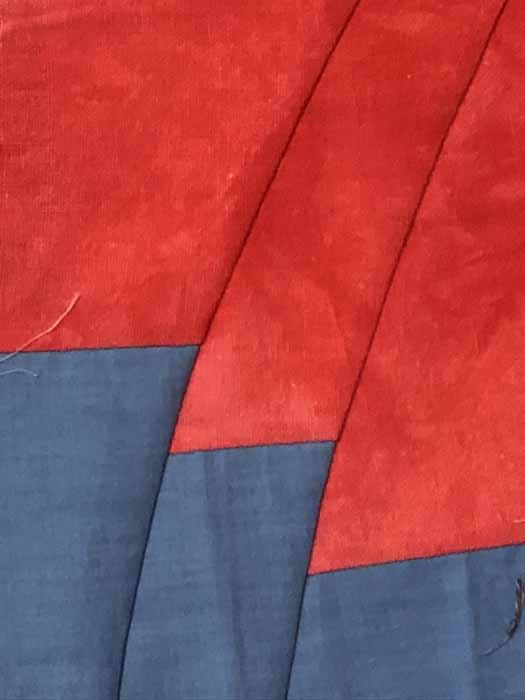The style of improv (no pattern) piecing I do evolves greatly during the construction of the quilt. Which is one of the things I love about it. I do a lot of slicing, repiecing, slitting, and slanting, all without a construction plan. With such a loose technique the color and value selections become critical. These must be done at the beginning. If done properly you’ll be able to wildly “slice and dice,” as I call it, knowing that you’ll be happy with the results.
Take a look at this improv quilt, In the Moment.
You can clearly see that blue-green is the dominant color and orange is the accent. I used a variety of each color, with a good bit of variation. The blue-greens are sometimes just blue or just green. Some are dark and others are medium, plus they have different patterns. The same is true for the variation found within the orange fabrics. A note about pattern: many improv quilts are made with solid fabrics only. There’s actually a good reason for that: the piecing will create a lot of pattern by itself and that will show up best with solid fabrics. However, I like to use near solids and a little bit of patterning here and there.
In addition to your main colors you’ll want some neutral fabrics, some lights and some darks. Can you see those in my example?
After selecting a nice stack of each colorway, it’s time to think about color proportions. In this quilt I wanted the blue-green to be about 3/4 of the quilt, with the orange accents being about 1/4. Therefore, I cut my fabric sizes accordingly: the blue-greens were each cut about 3 times as big as the orange ones. To start, I sewed together one primary fabric and one accent and put them all up on the design wall. This was the time for me to adjust the ratio, if desired.
Here’s another example, Fruit Salad. This time I was inpired by a photo of a white and pink lily. There was greenery around it and grey in the background.
Again, I thought of my colors and their desired proportions. I pulled a lot of pinks and whites, and also a little red and peach. I added yellow-greens, including a dark one, and I rounded things out with several soft greys. It turns out that I cut those first few reds pretty large and they quickly took over. I spent a lot of time whittling them down as things progressed. All that red took me away from the soft colors of the lillies so I shifted gears to the idea of watermelon and other summer fruit.
The bottom line:
– THINK about the proportions of colors you want in your quilt. Plan the fabrics and their starting sizes accordingly.
– Don’t be afraid to switch gears mid-stream.
Enjoy the adventure!
Ellen Lindner







